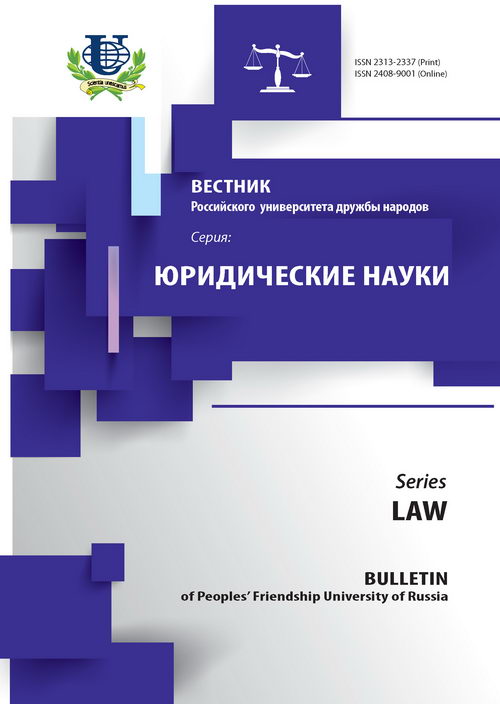Профессионализация судебного перевода
- Авторы: Василенко Л.Ю.1
-
Учреждения:
- Российский университет дружбы народов
- Выпуск: № 4 (2013)
- Страницы: 332-336
- Раздел: Статьи
- URL: https://journals.rudn.ru/law/article/view/5808
- ID: 5808
Цитировать
Полный текст
Аннотация
В статье выявляются и рассматриваются факторы, которые позволяют рассматривать судебный перевод как самостоятельную сферу профессиональной деятельности. В статье также раскрывается специфика судебного перевода как особого рода профессиональной деятельности в правовой сфере.
Об авторах
Лариса Юрьевна Василенко
Российский университет дружбы народов
Email: laravas@list.ru
Кафедра иностранных языков юридического факультета
Список литературы
- Baker M. In other words: A coursebook on translation. — London: Routledge, 2011.
- Brant T. Professional fields and truth regimes: in search of alternative approaches. — University of Lund, Sweden 2010
- Camayd-Freixas E. Court Interpreter Ethics and the Role of Professional Organizations. Interpreting in a Changing Landscape. proceedings of the 6th International Critical Link Conference. — Amsterdam/Philadelphia: John Benjamins, 2011.
- Carr S., Roberts R., Dufuor A., Steyn D. The critical link: Interpreters in the community. Papers from the First International Conference on interpreting in Legal, Health and Social Service Settings. Geneva Park, Canada, June 1–4. — Amsterdam / Philadelphia: Benjamins, 1995.
- Cheney G., et al. Just a job? Communication, ethics & professional life. — Oxford: Oxford University Press, 2010.
- Dubslaff, Friedel& Bodil Martinsen. «Community interpreting in Denmark: results of a survey.» Brunette, L. et al., 113-126. — Quebec, Canada, 2003
- Hertog E.A. Access to Justice across Language and Culture in the EU. — Antwerp: LessiusHogeschool, 2001.
- Joe Y.K. (2007). Labour Market Research for Translating & Interpreting Professionals in Sweden. http://www.ling.mq.edu.au/translation/lmtip_sweden.htm.
- Mikkelson H. Introduction to Court Interpreting. — Manchester, UK and Northampton, MA: St. Jerome Publishing. 2000.
- Mikkelson H. Court Interpreting at a Crossroads. Proceedings of Annual Conference of the National Association of Judiciary Interpreters and Translators (NAJIT). — Washington, 1999.
- Morris R. The moral dilemmas of Court Interpreting // The Translator. — 1995. — Vol. 1. — № 1. — Р. 25–46. — Bar-Ilan University, Israel.
- Ozolins U. Factors that determine provision of PSI: comparative perspectives on government motivation and language service implementation. URL: http://www.jostrans.org/ issue14/art_ozolins.php.
- Roseann Dueñas González, Victoria F.V., Mikkelson H. Fundamentals of Court Interpretation: Theory, Policy, and Practice. — Durham, NC: Carolina Academic Press, 2012.
- Roberts R. Community Interpreting Today and Tomorrow. Proceedings of the 35th Annual Conference of the American Translators Association. — Medford, NJ: Learned Information, 1994.
- Rudvin M., Tomassini E. Migration, ideology and the interpreter-mediator: the role of the language mediator in educational and medical settings in Italy // Valoro-Garcés, C & Martin, A. (eds) Crossing borders in community interpreting: Definitions and Dilemmas. — Amsterdam / Philadelphia: Benjamins, 2008.
- Tseng J. Interpreting as an Emerging Profession in Taiwan — a Sociological Model. Unpublished Master’s Thesis. — Fu Jen Catholic University, Taiwan, 1992.
- Witter-Merithew A. Power and powerlessness: Interpreting as a profession, in Proceedings of the Second Annual Institute for Court Interpreters. — Trenton, NJ: Administrative Office of the Courts, Court Interpreting, Legal Translating and Bilingual Services Section, Publication #4, 71-77. 1990.
Дополнительные файлы














